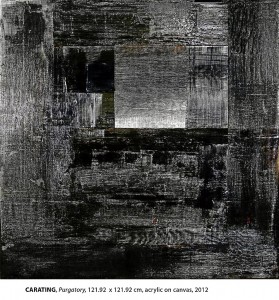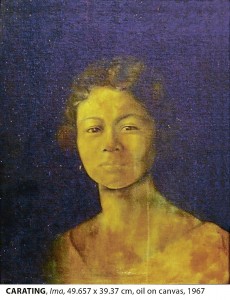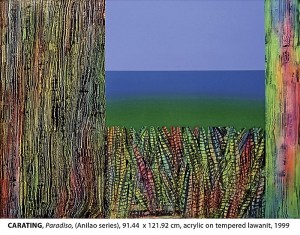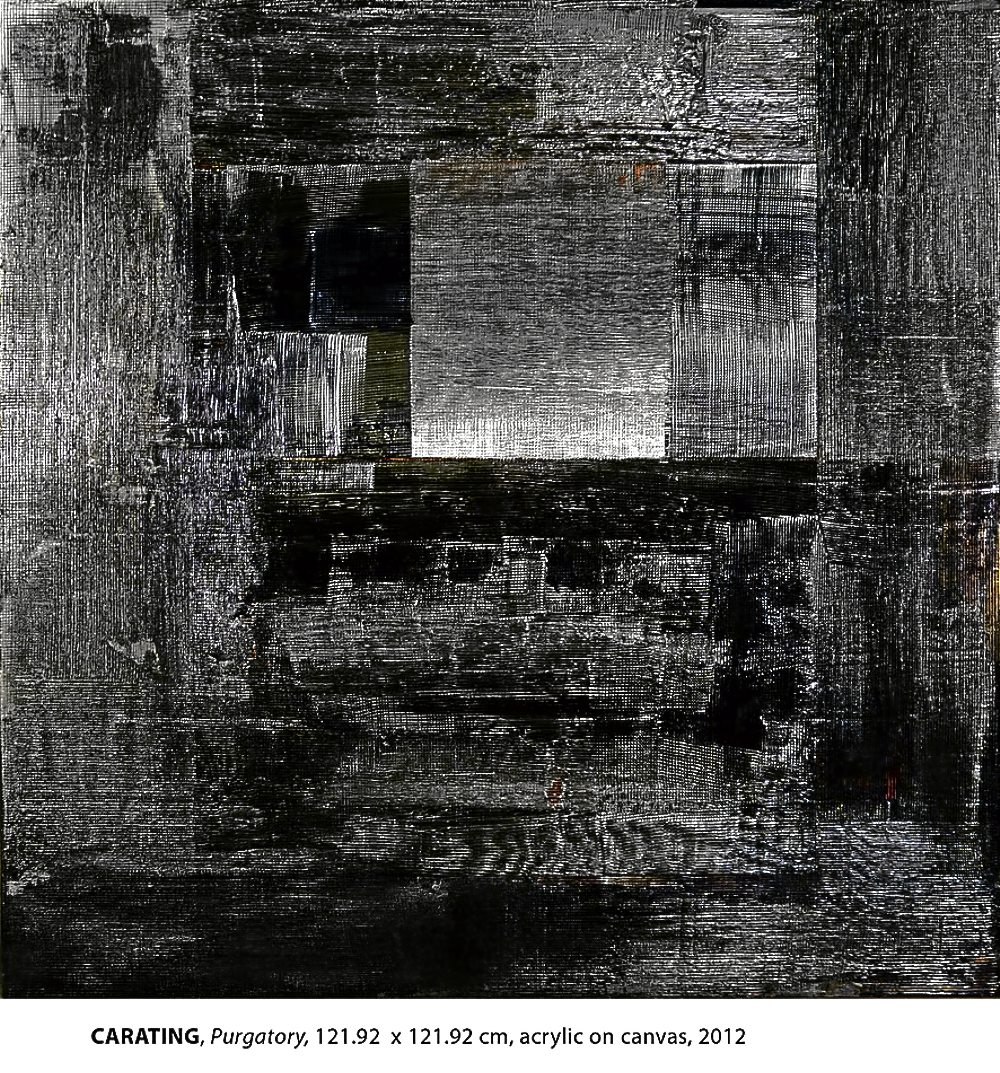
In “Norberto Carating: Artist Collection in Retrospect,” abstract artist Norberto de Guzman Carating looks back at the last 45 years of his career.
“He stands tall in Philippine nonrepresentational art with his highly consistent espousal of the idiom when most of the younger artists around him have gone figurative and commentative, installative, if not performative,” writes Rubén D.F. Defeo, who curates the exhibition and wrote the program, to be launched on opening night.

At 64, he is on the threshold of compulsory retirement, though “retirement and melodrama are far from the mindset of Carating. He is still as robust and resolute to add more years and éclat to an already shining career.”
Carating has an Advertising Design degree from University of the Philippines, where he was a student of National Artist José Joya.
He originally wanted to major in Painting, but his parents asked him to study Advertising, thinking it would help him land a job faster.
He never worked in the advertising industry. After graduating in 1971, he continued to take up additional art subjects, and in 1977 was back at UP teaching “painting from life” and “painting composition” for two years.

Around this time, he was also pursuing his other passion: music. He was a scholar of the government-led Music Promotion Foundation for nine years, where he studied under Isang Tapales.
He had a successful career in opera and zarzuela from 1973 to 1985, performing solo as a baritone, most notably as Schaunard, the musician in Puccini’s “La Boheme,” at CCP in 1977.
Creature of habit
Carating’s art has remained reflective and pragmatic through the years. He started as a figurative painter, but as early as 1970, in his “Self-Portrait,” you could already see signs leading to a prolific career in abstraction.
Says the artist: “When you look at my works at the retrospective show, you can see that there are elements I’ve always focused on, despite using different techniques. I have always been fascinated with lines—from horizontal and vertical lines in my early works, to crosshatching in my current works, which for me is an exercise in texture.”

The artist is a creature of habit. Each morning is devoted to time alone in his studio, working. Even if he is not in the mood, he forces himself to paint. Ever since his mother passed away two years ago, his afternoons—every single day—has been diligently spent visiting her grave.
He is dedicating this retrospective to his parents, Susana de Guzman and Rafael Carating.
“Carating has been painting for 45 years, and each single year… adds to the characteristic exquisite style of image-making he is identified with today,” explains Defeo. “Many artists have, in fact, attempted to imitate him, dishing out versions, both superior and inferior, of the originals. Whether or not the phenomenon flatters Carating, the fact remains he has created such a convincing force in local mainstream art to merit a following.”
Very low profile
Among his contemporaries—Nestor Vinluan, Tony Daroy, Roy Veneracion and Glenn Bautista—he has kept a very low profile, but he has one of the most successful careers. His works can be found in the private homes of the country’s 400. His metallic abstractions, in particular, are favorites of Manila’s elite because of their colors, texture and meditative quality.

“A Carating goes beyond the usual large format of a square,” writes Defeo. “[It] goes beyond the medium of acrylic that is more often than not metallic. [It] goes beyond the technique of hiding and revealing continuum, achieved most of the time through layering and scraping.”
The show, which runs for three months at UP’s Heritage Museum, provides a visual narrative to Carating’s life story, with the earliest work dating back to 1967.
“The depots and detours in Carating’s journey, both professional and personal, are reflected in the exhibit,” assures Defeo.
“Norberto Carating: Artist Collection in Retrospect” is presented by Bulwagan ng Dangal, in cooperation with the Office for Initiatives in Culture and the Arts of UP Diliman, and runs July 5-Sept. 30 at Bulwagan ng Dangal (University Heritage Museum). An invitational cocktail reception will be held on July 5, 6-9 p.m.













































